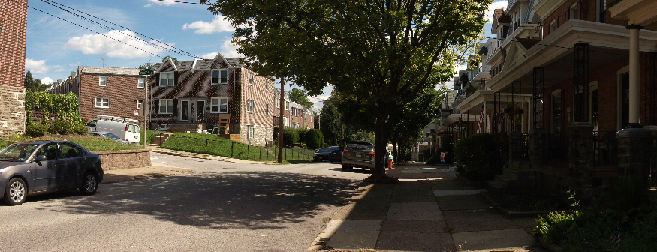Hierarchy
The key is attaining a tradeoff--a balance of priorities. To do this we need some sort of hierarchical modal evaluation criteria. This could be easily abused and turned into a checklist by the same kinds of numbnuts who eviscerated any pretense of urbanism in Syracuse, but having such a checklist exist, and be public knowledge, would be an invaluable tool in project evaluation and project criticism. For a street--a value-creation platform--modal consideration would progress
- Pedestrians
- Cyclists
- Dedicated Mass Transit (if applicable)
- Motorized Transport
The Role of Forgiving Design
Subjective Safety
Key to the performance of the Dutch cycling network is a concept called subjective safety, the realization that, when it comes to driving usership, the perception of safety is just as important as what is, statistically, "safe". So the optimal approach to generating the prioritization hierarchy above would seem to be to implement subjective safety principles across the more vulnerable modes, fitting forgiving design for automobiles in where it can fit (precisely the opposite of our current approach, which fits in infrastructure where it can fit after the cars are designed in). But--at least in London--subjective safety and forgiving design appear locked in battle, with TfL's flow needs trumping subjective safety needs, despite the lobbying of numerous cycling-advocacy organizations.
Two Sides of the Same Coin
But the principles of subjective safety are the principles of forgiving design--just applied to a different mode. The whole point of subjective safety, the perception of safety, is achieved by creating an environment forgiving of error; the whole point of forgiving design is an environment forgiving of driver error. This intermodal mesh drives the British conflict: on London's limited road space, who gets the space allocation they need for their approach? Who "wins"? Are they the drivers, accommodated by forgiving design, or the cyclists, accommodated by subjective safety? But it doesn't have to be this way: understanding that they are one and the same allows us to integrate the two elements--forgiving design and prioritization hierarchy--into a single model.
Upshot
Subjective safety and forgiving design, now revealed to be one and the same thing, merely tell us how to design safe* infrastructure for a particular mode. But our world is multimodal. To answer the question of which mode gets priority, the hierarchy, increasing attention for increasing vulnerability, yields the answer. Hence the framework which I am proposing, and wish to investigate further, is one where we
- Consider a given route. Consider factors such as existing usership(s), current population density, planned population density, distance/mode optimization, origin/destination proximity, etc., to model usership. For roads, none of this matters. But roads also cannot have curb cuts.
- Design for each user in turn of vulnerability.
- For each mode, apply forgiving design concepts. For places with low pedestrian volume, but increasing bike volume, for example, a multi-use trail will work.
- Evaluate whether or not the tax base can support the design. If not, reduce until within this "solvency envelope".
Further Questions
This is just a framework. Many unanswered questions within this framework remain, such as what minimum adequate forgiving design for each mode would be, what optimal infrastructure in several contexts would look like, and even the whole question of designing for enduring financial solvency. In fact, this framework is the core of the research I wish to pursue, largely because I find myself convinced this is the right approach and would like to see it applied and further refined--but as it stands, it is hardly ready-to-go as a framework, and is rather much more conceptual.
_________________
* With certain exceptions, e.g. suburban arterials, where forgiving design appears powerless against an even more foundational foe, the curb cut.







